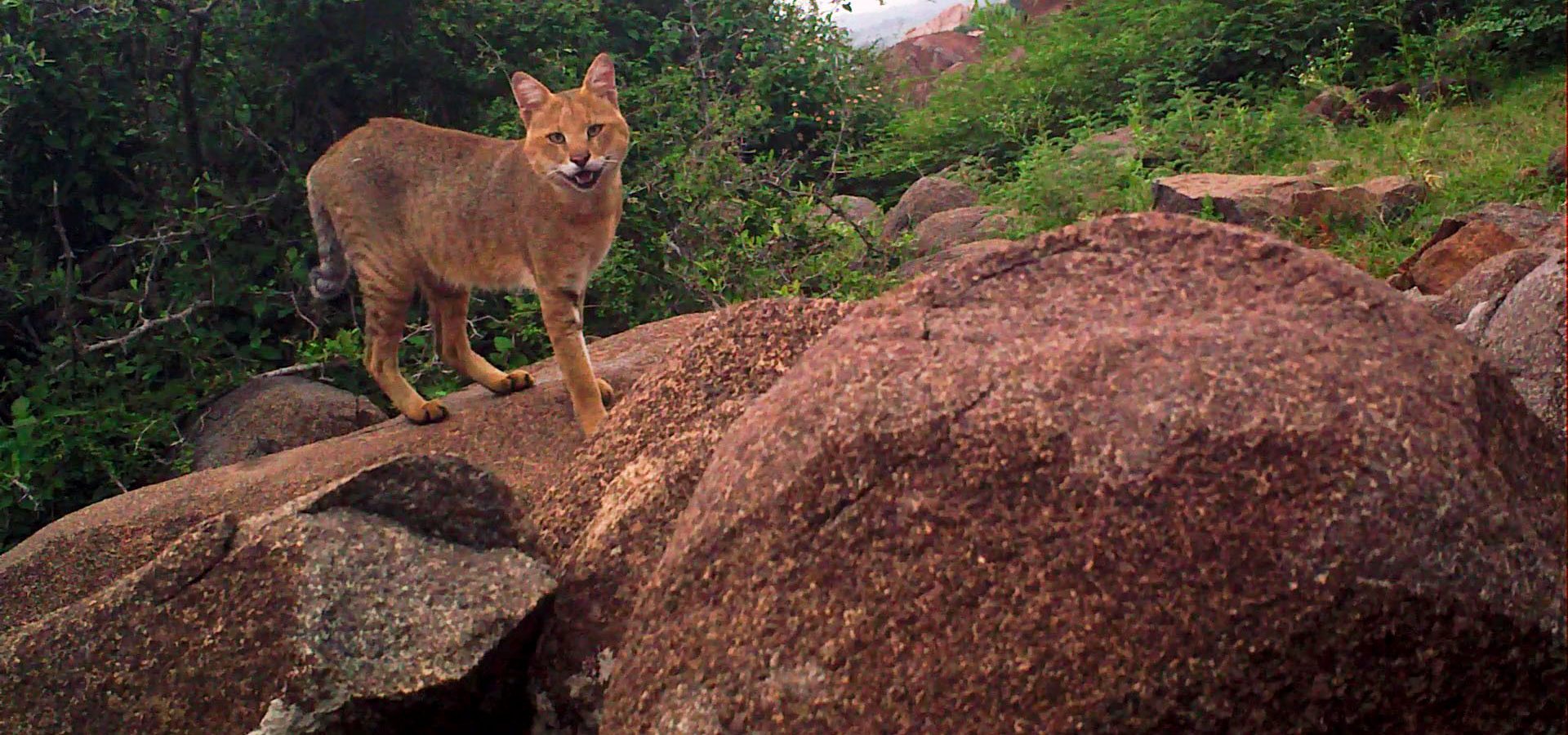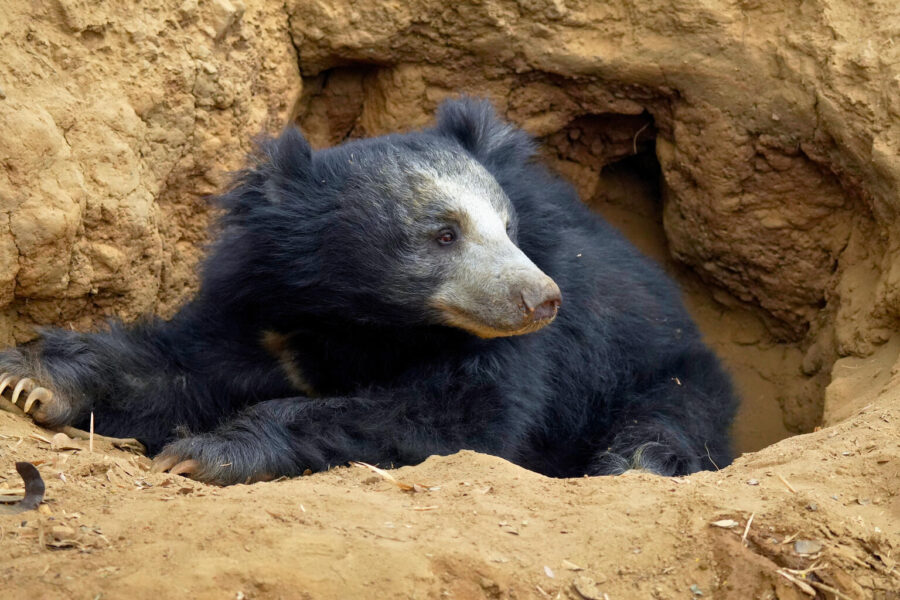While we are mainly known for our rescue and rehabilitation efforts, what many people may not necessarily be aware of is how our dedicated team of veterinarians, field biologists and researchers have been conducting on-ground studies by setting up motion-activated hidden trap cameras, while studying sloth bear denning in South India. Clearly, the footage of the sloth bears captured has made breakthrough revelations and has helped us better understand the behaviour of these animals in the wild, but what took us by surprise were the unexpected guest appearances that our camera traps captured!
These cameos deserve a special mention and have helped us tremendously to understand more about their natural behaviour in the wild.
Spotting a leopard in the wild is every naturalist’s dream and this footage taken by our trap cameras have brought to our notice how leopard territories may overlap with those of sloth bears, as they make use of the rocky caves. Usually, sloth bears and leopards avoid each other and keep a healthy distance, but mother sloth bears are on high alert when a leopard is in the area because nobody messes with mama bear!
An extremely rare species to be spotted in the wild, the rusty-spotted cat is one of the two smallest wild cats found in the world! They are, in fact, smaller than your house cats. They are endemic to India, Nepal and Sri Lanka and are very elusive. Measuring at 35-48cm in body length, they can easily fit into human palms. However, don’t be fooled by its size as the rusty-spotted cat is quite mighty and has the ability to bring down more prey than any other feline!
The male sloth bear spotted in the footage is not attempting to break into a dance, no way! He is marking one of his resting dens with scat and through pede-marking. Pede-marking is the act of bears grinding their feet into the ground, and that is exactly what the bear is doing. Up until now, bear biologists thought that only grizzly bears could do pede-marking but with the research footage collected by our camera traps, we are sure that sloth bears have the same behaviour!
After a day full of foraging through the forest, this mother bear and her cub return to their den with the young cub hitching a ride on her back. For the first seven to nine months of their lives, the sloth bear cubs are known to ride their mother’s back, which is a unique trait among bear species.
There is a denser fur patch on the sloth bears’ back so that the cubs can ride, until the age of seven to nine months old! Once the cub alights from mom’s back and is safe inside the den, the mother bear sniffs out the camera for any unexpected threats.
Wildlife SOS in no way encourages the recording of explicit footage, in any way, but the camera traps are guilty nonetheless of spotting two Indian crested porcupines in an intimate moment! Unlike its North American cousin, Indian crested porcupines do not climb trees, but lives in caves and is, therefore, a frequent neighbour of the sloth bear. However, the two species live in harmony without any interference from each other.
Wildlife SOS has made breakthrough research with the help of these hidden cameras that have been strategically placed around the dens of sloth bears to understand their natural behaviour. We have also been involved in various other on-ground research projects when it comes to mitigating man-animal conflict, as well as studying animals in their habitat. With these series, it will be easier for us to understand the variety of species that we share our home with and those that we are supposed to co-exist with.





